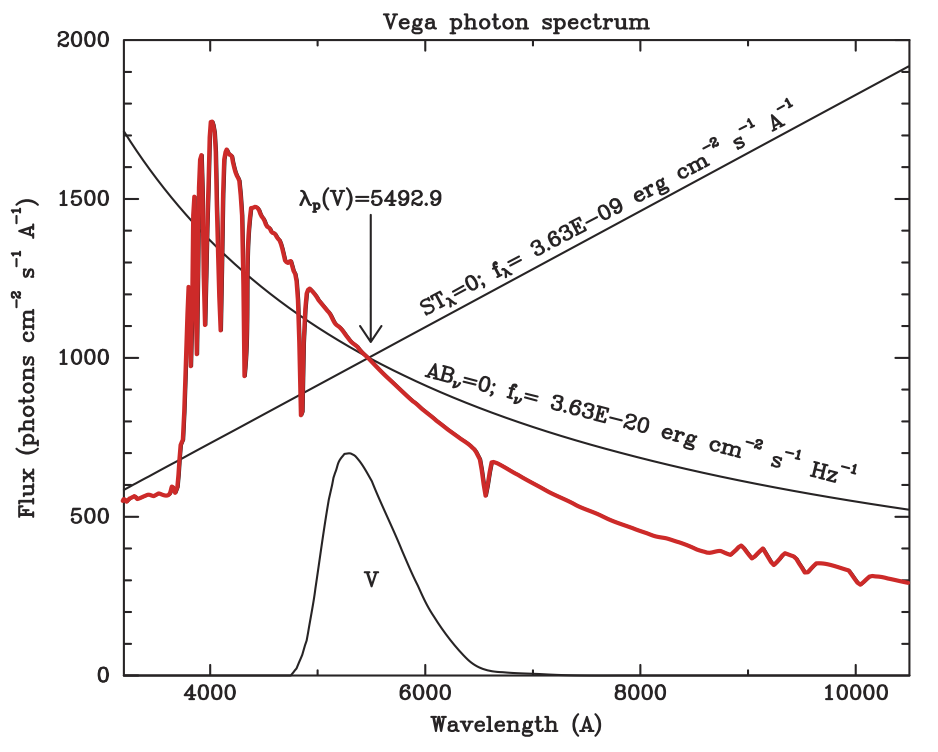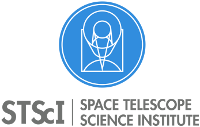Units and Constants¶
synphot understands
Astropy Units and Quantities.
Its units module expands on that by providing:
“Shortcuts” (proper names) for some constants and composite units that are frequently used in this package.
A convenience function,
convert_flux(), to convert between different flux units.Support for non-standard unit names for backward compatibility with ASTROLIB PYSYNPHOT data files.
Constants¶
These are the constants provided by units. They can be computed
from existing constants in Astropy but are pre-calculated here for convenience:
Constant |
Description |
|---|---|
C |
Speed of light in Angstrom/s |
H |
Planck’s constant in CGS |
HC |
\(H \times C\) |
SR_PER_ARCSEC2 |
Steradian per squared arcseconds |
Flux Units¶
In addition to flux units already supported by Astropy, such as Jy (and its
prefixes), count, ABmag, and STmag, units adds direct support to
the following as well. In synphot, the easiest way to specify the desired
flux unit is by passing in a flux_unit keyword into a function or class
method and assigning it the unit name (as string) or direct variable name:
Name |
Variable |
Unit |
|---|---|---|
photlam |
|
\(\text{photon} \; \text{s}^{-1} \; \text{cm}^{-2} \; \mathring{A}^{-1}\) |
photnu |
|
\(\text{photon} \; \text{s}^{-1} \; \text{cm}^{-2} \; \text{Hz}^{-1}\) |
flam |
|
\(\text{erg} \; \text{s}^{-1} \; \text{cm}^{-2} \; \mathring{A}^{-1}\) |
fnu |
|
\(\text{erg} \; \text{s}^{-1} \text{cm}^{-2} \text{Hz}^{-1}\) |
obmag |
|
\(-2.5 \; \log(\text{count})\) |
vegamag |
|
\(-2.5 \; \log(\frac{f}{f_{\text{Vega}}})\) |
The function convert_flux() provides an easy way to
convert between all the supported flux units, including count/OBMAG (needs an
extra input specifying telescope collecting area) and VEGAMAG (needs an extra
input specifying the Vega spectrum to use), by taking account all the
necessary unit equivalencies. You may also use
to() directly, as supported by Astropy,
but you would need to provide the equivalencies on your own.
Somewhat related are synphot.units.AREA, which is a shortcut for the unit
\(\text{cm}^{2}\) often used for conversion to/from count or OBMAG, and
synphot.units.THROUGHPUT, which is identical to dimensionless unscaled unit
in Astropy for unitless transmission curves.
For backward compatibility with ASTROLIB PYSYNPHOT data files, the following non-standard flux unit names (case-insensitive) are also supported:
Name |
Resolves to |
|---|---|
transmission extinction emissivity |
Dimensionless unscaled |
jy |
|
stmag mag(st) |
|
abmag mag(ab) |
|
Counts and Magnitudes¶
synphot supports count and the following magnitude systems:
VEGAMAG, which is defined by setting the magnitude of Vega to zero in all bands. The adopted Vega spectrum is defined over a wavelength range of 900 Angstrom to 300 micron.
\(\text{AB}_{\nu}\) magnitude from Oke (1974), which is based on a constant flux density per unit frequency.
\(\text{ST}_{\lambda}\) or Space Telescope magnitude, which is based on a constant flux density per unit wavelength.
Instrumental magnitude (OBMAG) that is the logarithmic form of counts. Conversion involving counts and OBMAG requires telescope collecting area to be provided.
VEGAMAG offers a reasonable approximation to many of the conventional photometric systems that use the spectrum of Vega to define magnitude zero in one or more bandpasses. In broadband photometry, the relevant bandpass integral is calculated first for the source spectrum and then again for the spectrum of Vega, and the ratio of the two results is converted to a magnitude. This would not be a scientifically meaningful option for spectrophotometry.
Meanwhile, \(\text{AB}_{\nu}\) and \(\text{ST}_{\lambda}\) are appropriate for either spectrophotometry or photometry. Their zero point values of 48.60 and 21.10 mag, respectively, are chosen for convenience so that Vega has \(\text{AB}_{\nu}\) and \(\text{ST}_{\lambda}\) magnitudes close to 0 in the Johnson V bandpass, as shown in the following figure:

Standard photometric systems generally use the spectrum of Vega to define magnitude zero. The spectrophotometric magnitudes \(\text{AB}_{\nu}\) and \(\text{ST}_{\lambda}\) refer instead to spectra of constant \(f_{\nu}\) and \(f_{\lambda}\), respectively. Magnitude zero in both systems is defined to be the mean flux density of Vega in the Johnson V bandpass. Thus all three of the spectra shown here produce the same count rate in the Johnson V bandpass. The pivot wavelength of Johnson V is defined to be the crossing point of the \(\text{AB}_{\nu}\)\(= 0\) and \(\text{ST}_{\lambda}\)\(= 0\) spectra.¶
Because the \(\text{AB}_{\nu}\) and \(\text{ST}_{\lambda}\) systems are defined such that they result in constant magnitudes for spectra having constant flux per unit frequency and wavelength, respectively, they will not provide magnitudes on a conventional system, such as UBVRI, without first deriving an appropriate transformation onto the desired standard system.
OBMAG and counts are used to predict detected count rates. For instance,
countrate() calculates the predicted
number of detected counts per second integrated over the bandpass.
There are two important things to remember concerning this unit:
The number of counts per channel depends on the width (in wavelength space) of the channel in the wavelength grid that is used. Flux calculations are done internally in the unit of PHOTLAM (unless stated otherwise), so when the output unit of counts or OBMAG is requested, the PHOTLAM values are multiplied by the collecting area of the telescope and by the width (in Angstrom) of each channel in the wavelength grid. Therefore, in order to accurately predict the number of counts per channel for a spectroscopic instrument, it is necessary to use a wavelength grid that provides a good match to the dispersion properties of the selected instrument mode. For supported HST instruments, the appropriate wavelength grid will be automatically selected in stsynphot.
The unit count may refer to different physical units for different instruments. For instance, in HST, it refers to the actual detector counts for the FOC, FOS, HRS, and HSP instruments. While for the WF/PC-1, WFPC2, NICMOS, WFC3, COS, ACS, and STIS instruments, it refers to electrons.
Wavelength Units¶
synphot supports all wavelength, frequency, and spectroscopic wavenumber
(inverse wavelength) that are supported by Astropy. Conversion between those
units can be easily done using to() and
passing in spectral() as equivalency.
For backward compatibility with ASTROLIB PYSYNPHOT data files, the following non-standard wavelength unit names (case-insensitive) are also supported:
angstroms
inversemicrons
jy
Examples¶
Create a blackbody source spectrum:
>>> from astropy import units as u
>>> from synphot import SourceSpectrum
>>> from synphot.models import BlackBodyNorm1D
>>> sp = SourceSpectrum(BlackBodyNorm1D, temperature=5000*u.K)
Sample the source at some wavelengths given in nm and obtain flux in count for HST:
>>> from synphot import units
>>> area = 45238.93416 * units.AREA
>>> sp([499, 500, 501, 502] * u.nm, flux_unit='count', area=area)
<Quantity [219.3785428 , 220.16129659, 220.94026689, 221.71544085] ct>
Sample the source at 5E+15 Hz and obtain flux in FLAM:
>>> sp([5E+15] * u.Hz, flux_unit=units.FLAM)
<Quantity [3.52467344e-29] FLAM>
Sample the source in internal units (Angstrom and PHOTLAM):
>>> sp(6000)
<Quantity 0.0006156 PHOTLAM>
